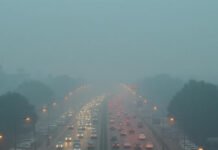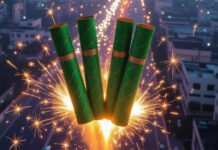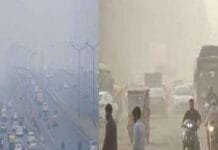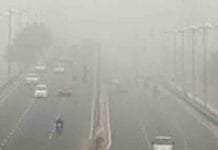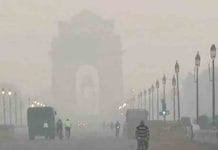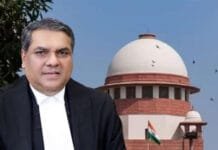New Delhi, October 22, 2025 — The capital woke up under a thick toxic haze the morning after Diwali, with air quality deteriorating to the “severe” category across most monitoring stations. According to the Central Pollution Control Board (CPCB), Delhi’s overall Air Quality Index (AQI) touched 612, marking the worst post-Diwali pollution in the last three years.
Despite repeated government warnings, awareness campaigns, and a blanket ban on firecrackers, illegal fireworks lit up Delhi’s skies late into the night, undoing weeks of progress in air quality improvement efforts.
“The city is literally gasping for breath again,” said Dr. Randeep Guleria, former AIIMS director. “This is not just pollution; it’s a public health emergency.”
Residents reported burning eyes, sore throats, and breathing difficulties as the city’s skyline disappeared under a grey blanket.
Areas like Anand Vihar, Jahangirpuri, and RK Puram recorded AQI levels between 580 and 650, while neighboring NCR cities like Noida and Ghaziabad were no better.
🌫️ GRAP Stage IV Activated
In response, the Commission for Air Quality Management (CAQM) reactivated Stage IV of the Graded Response Action Plan (GRAP), which includes:
Complete ban on construction activity
Restriction on diesel vehicles (except essential services)
Closure of schools if pollution levels persist
However, many experts argue that these measures are too little, too late.
“Every year we repeat the same cycle — warnings, bans, violations, and emergency steps. What we need is strict on-ground enforcement and behavioral change,” said Sunita Narain of the Centre for Science and Environment (CSE).
🚫 Crackers Ban Violated Across NCR
Police reported over 1,200 violations of the cracker ban, but residents claim the ban lacked proper enforcement.
“We saw fireworks in every colony. People feel festive laws are optional,” said Rajeev Khanna, a resident of Dwarka.
Meanwhile, Delhi Environment Minister Gopal Rai stated that 300 teams were deployed overnight, but many violators managed to evade detection.
🌍 Impact Beyond Delhi
The pollution crisis has also affected NCR towns — Gurugram (AQI 532), Faridabad (510), and Noida (545). Meteorological officials warn that low wind speed and moisture will trap pollutants for at least 48 more hours.
“There is no significant wind movement till October 24, which means pollution levels may worsen,” said an IMD official.
💭 Public Reactions
Social media flooded with posts showing smog-choked streets.
“Every breath feels heavy. Why celebrate Diwali if we can’t even see the diyas?” tweeted a Delhi University student.
🩺 Health Advisory
Doctors urge residents to stay indoors, use N95 masks, and avoid morning walks. Hospitals report a 25% surge in respiratory complaints since last night.
“Children and elderly should avoid outdoor exposure completely,” warned Dr. Arvind Kumar, chairman of the Lung Care Foundation.
🔍 The Road Ahead
Environmentalists are urging authorities to strengthen cracker bans with stricter policing, promote eco-friendly Diwali celebrations, and expand public transportation to cut vehicle emissions.
Despite the grim air, several Delhiites pledged to celebrate next year’s Diwali “without smoke and noise.”
“We can light diyas, not dynamite,” said eco-activist Meenakshi Joshi. “It’s time we choose health over tradition.”


